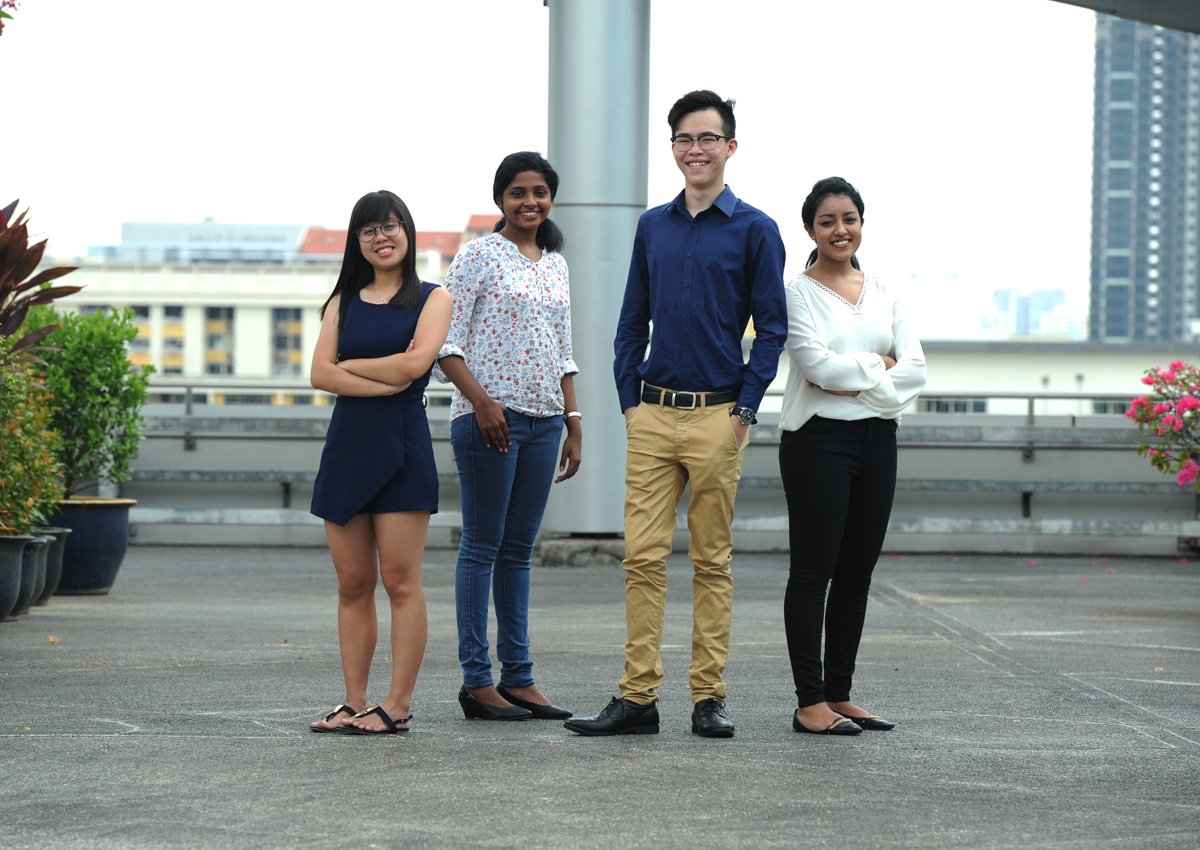One in three local university students admitted last year is a polytechnic graduate, as the public university landscape expands and diploma holders seek to upgrade themselves.
The Ministry of Education (MOE) has revealed that last year’s local university intake had the highest ever proportion of polytechnic graduates at nearly 34 per cent, up from 24.7 per cent in 2011.
The figures are based on the student intakes of publicly funded undergraduate programmes at the six local universities. They are the National University of Singapore (NUS), Nanyang Technological University, Singapore Management University (SMU), Singapore University of Technology and Design, SIM University (UniSIM) and Singapore Institute of Technology (SIT).
Educators said the greater proportion of poly graduates in local universities is in line with the rising aspirations of diploma holders who want a university degree.
A spokesman for Ngee Ann Polytechnic said poly graduates have more options today. They can work in an area related to their course, go on to other careers or further their studies.
“Ultimately, we want our students to have a passion for their chosen profession and to achieve skills mastery,” she said.
One in five poly graduates won a place in a degree course this year. Four years ago, it was 15 per cent – about one in seven.
Education policy expert Jason Tan of the National Institute of Education noted that students’ aspirations are linked to “the job market’s bias in favour of degree holders”.
“So it’s more for practical reasons than personal interest that most diploma holders want to gain a competitive edge.”
While the Government is taking steps to value the skills and on-the-job performance of diploma holders, people’s mindsets will take time to change, he said.
The median monthly starting salary for polytechnic graduates last year was $2,100, and $3,300 for university graduates.
With the expansion of SIT and UniSIM, more university places have opened up for diploma holders. These two institutions offer longer and more immersive work attachment programmes.
Traditionally, junior college is seen as the most secure route to a degree – previous years’ figures show that more than 70 per cent of A-level holders enter the local universities each year.
But increasingly, a significant proportion of students who enter the polytechnics do so out of choice, and not because they do not qualify for junior college.
MOE said the six universities received about 39,000 applications from A-level holders, and close to 31,000 applications from polytechnic graduates last year.
Each applicant usually goes for two, if not three, different institutions.
Polytechnic students said they are glad the local universities are opening up to them.
Mr Dylan Tan, 23, a mechanical engineering graduate from Singapore Polytechnic, said his sustainable infrastructure engineering (building services) course at SIT is a good continuation from his poly modules.
He was “very relieved” to get a place at SIT. “I don’t have to worry about going to a private university or going overseas and being away from home,” he said.
Ms Naseera Hidayahtullah, 21, a second-year accounting student at UniSIM, said she wanted to further her education after getting a business management diploma from Nanyang Polytechnic, but also wanted work experience.
She chose UniSIM for its six-month work stint during term time. (At other universities, internships are usually during the holidays.)
“The practical training is part of the curriculum and it prepares us for employment,” she said.
Ms Lena Tan, 20, who has a law and management diploma from Temasek Polytechnic, is glad to have clinched a place at SMU law school. The first-year undergraduate said: “If you want to do law, you need a professional degree.
“I knew my chances were very slim especially because I’m competing with top-notch JC students. I’m happy that we are given the same opportunities.”
More poly grads in top degree courses here
These days, you don’t have to be a junior college (JC) student to get into competitive undergraduate programmes such as law.
In the last five years, more students are taking the polytechnic route to these professional degree courses offered by the local universities.
The number of poly graduates in undergraduate courses like law and medicine has grown slightly, said a Ministry of Education spokesman.
These two courses typically take in A-level leavers with a string of As, or poly graduates with near perfect or perfect grade point averages of 4.
Last year, the law and medicine courses each took in seven poly graduates, up from just two and one respectively in 2011.
Poly students now make up about 2 per cent of both courses’ cohorts, from 0.4 to 0.5 per cent previously.
In the same time period, the National University of Singapore (NUS), Nanyang Technological University and Singapore Management University (SMU) admitted 253 students from polys into their accountancy courses, up from 127 before.
NUS’ department of architecture at its school of design and environment had about 40 poly graduates in its intake last year, double the 20 or so five years ago.
Mr Looi Kwok Peng, course manager of Temasek Polytechnic’s law and management course, said: “The desire to get into the local law schools is not new, but the success rate seems to be increasing.
“Until very recently, the law schools did not publish any indicative grade point average for diploma-holders, like they did for JC results,” he said.
Poly students told The Straits Times they knew it would not be easy for them to get into these competitive courses, but were more hopeful after seeing some of their seniors secure places.
Ngee Ann Polytechnic student Bryan Lim, who is graduating with a business studies diploma this year with a grade point average of 3.95, has applied for law at NUS and SMU.
The 20-year-old, who has received an offer to read law at King’s College London, said: “I know it’s challenging, but I’m not too worried as I have seen seniors from my course get into law school.”
His senior Nicholas Yue, 23, who read business information technology in Ngee Ann Polytechnic, earned a spot in NUS Law in 2014 with a grade point average of 3.8.
He had qualified for JC with a L1R5 score of 11, but chose poly as he felt it would prepare him better for work. Still, he was surprised to get an interview for law school.
“It’s good that the choices for polytechnic graduates are not so limited and they can enter university,” he said. “Making that choice after the O levels – that’s quite a young age to decide.”
Ms Pavani Jeyathasan, 20, a first-year accountancy student at SMU, knew JC was not for her as she preferred to focus on her interest in business and accountancy.
Said the Nanyang Polytechnic accountancy and finance graduate: “I didn’t think about the odds of going to university through the poly route. I just worked hard.”
Republic Polytechnic biomedical sciences graduate Kenneth Gwee, 22, who is in his first year reading medicine at NUS, said: “I did aim for a degree but I didn’t think I’d make it this far to medicine. It was my goal and dream ever since primary school to be a doctor.”
ateng@sph.com.sg

This article was first published on May 2, 2016.
Get a copy of The Straits Times or go to straitstimes.com for more stories.






